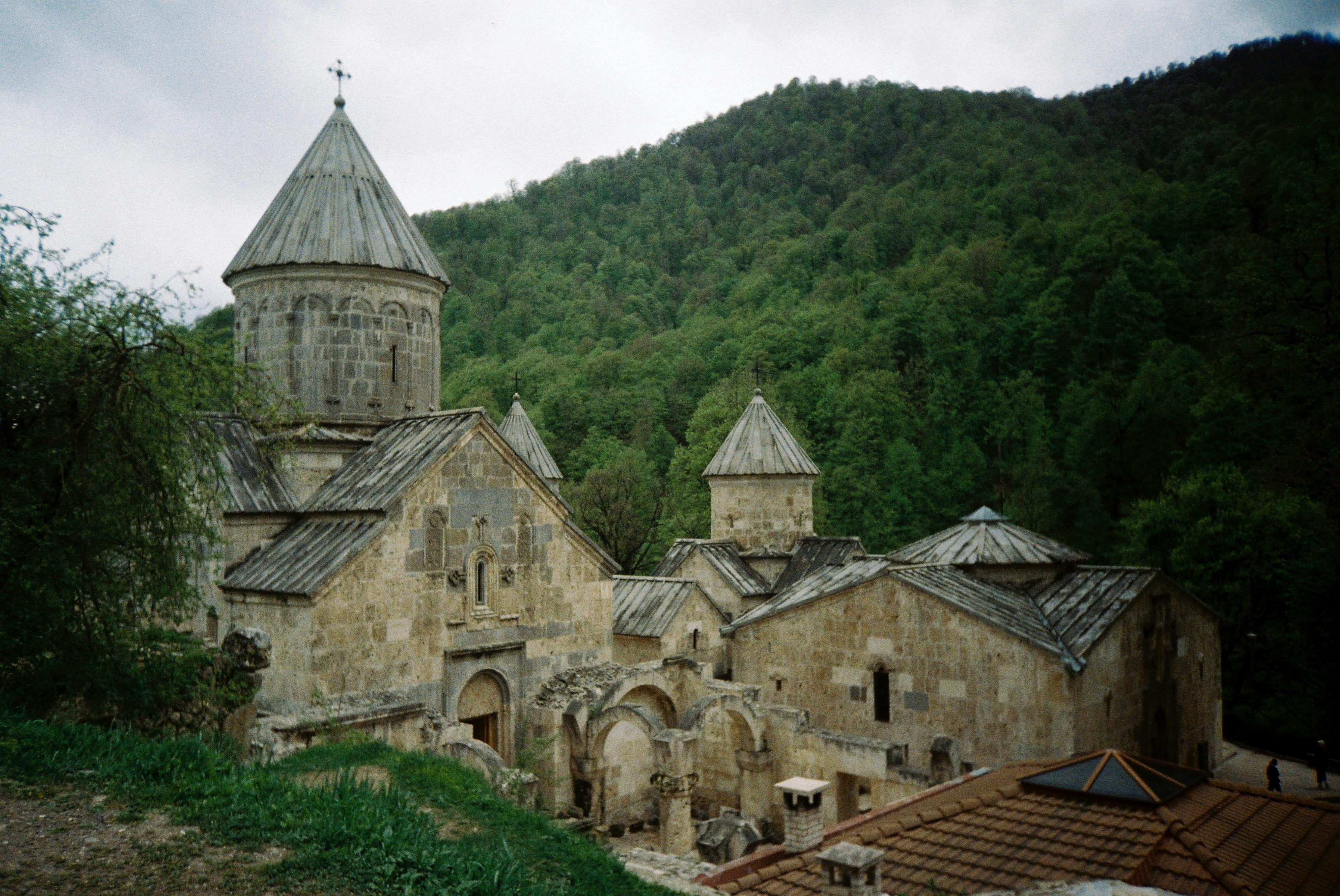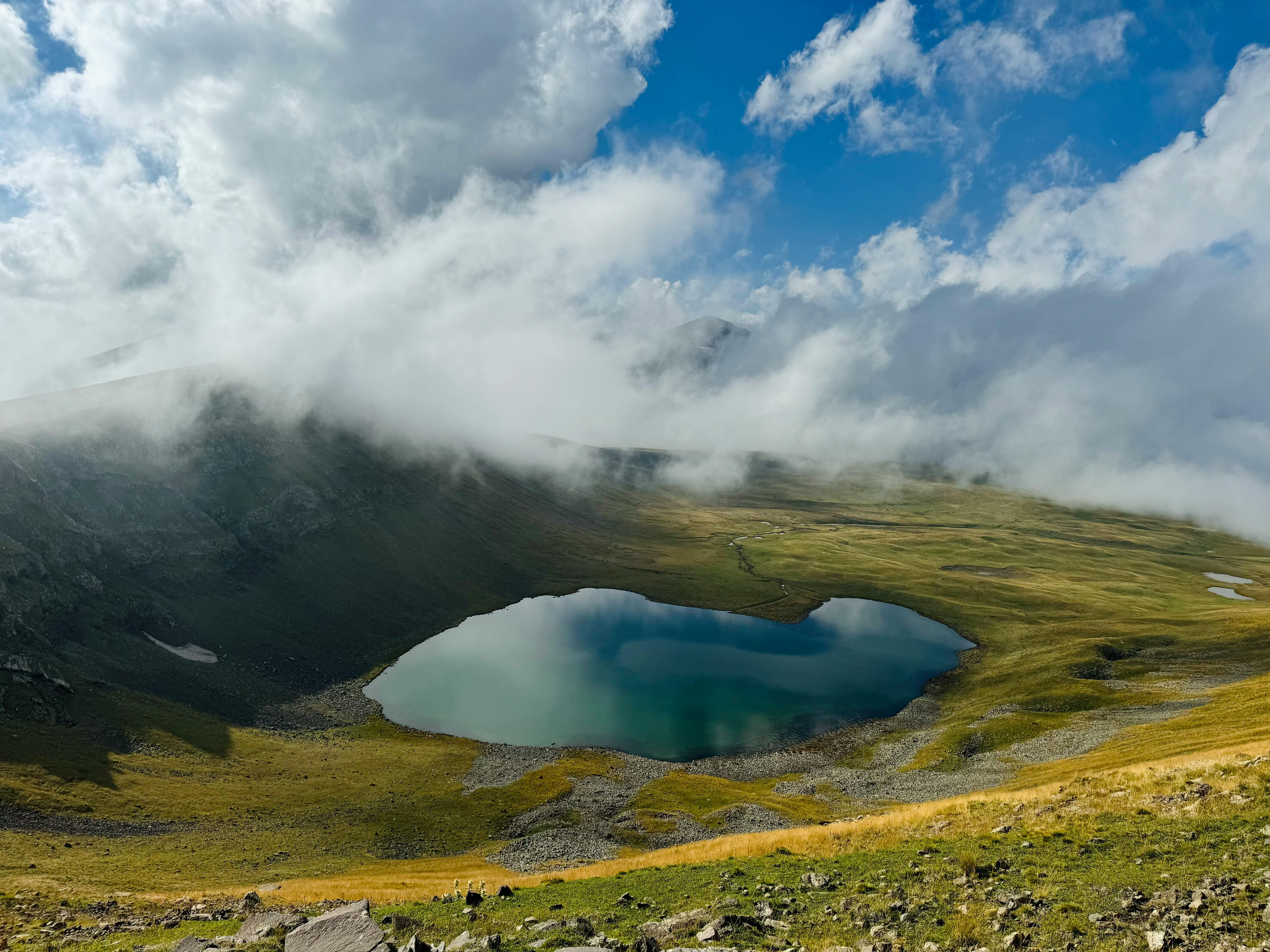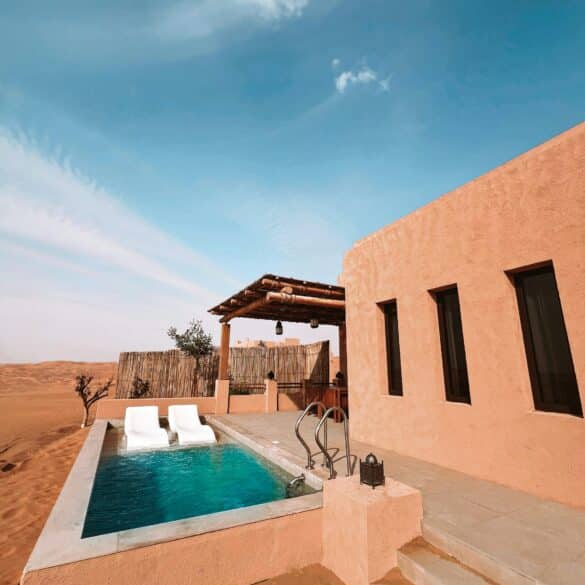Best Hidden Temple Hiking Trails in Armenia: Expert Local Secrets
If you’re craving an adventure that fuses soul-stirring natural beauty, centuries-old spiritual sanctuaries, and the kind of rugged authenticity you only find where the crowds haven’t stomped it out—look no further than Armenia’s hidden temple hiking trails. I’ll be completely honest: Armenia grabbed hold of my travel heart years ago, and, unlike some “best places to hike” lists that parrot the same three mountains, I’ve gone out of my way (sometimes literally miles off the map) to explore its secretive monasteries tucked into cliffs, forest-enshrouded churches, and mountaintop shrines. What really strikes me every time? The silence broken only by your footfall, the way wildflowers seem to spill right onto ancient flagstones, and the startling realization that you’re likely standing where pilgrims did a thousand years before—or, sometimes, no one at all for weeks on end.1
Now, you might be thinking: “Hidden temples in Armenia? Don’t most guides just talk about Tatev or Geghard?” Sure, those are world-class, and for good reason! But I’m talking about the real gems—those off-the-grid hiking trails where the reward is not only the destination, but the luminous green valleys, ancient stone carvings, and welcoming local villagers who still maintain a centuries-old rhythm of life. There’s a kind of humility—paired with an almost rebellious joy—in venturing where the tour buses simply cannot go.2
Armenia is home to over 4,000 churches and monasteries—more per capita than almost any country on earth! Many of them are accessible only via footpaths and hidden trails through the mountains, preserving their peaceful atmosphere and untouched authenticity.
Funny thing is, I used to think “hidden” meant “impossible to find without a guide or fluent Armenian.” Actually, that’s only half-true: while maps and GPS signals can be spotty (more on that later—it’s a critical point), with the right preparation and a sense of curiosity, you can safely discover these treasures, even as a solo traveler, and have epic, deeply personal moments. So, whether you’re a hiking novice, a returning Armenian diaspora, or a hardcore trekker who’s already conquered the “bucket-list” spots and wants the real heart of the country, this is your guide—season-tested, insider-informed, and full of stories, practical advice, step-by-step breakdowns, and honest, sometimes awkward victories and missteps.3
Why Armenia’s Hidden Temple Trails? Authenticity, Adventure, and Astonishment
Here’s the thing that always pulls me back: Hiking in Armenia isn’t just about the views (though, let’s be real, the view from almost every monastery is jaw-droppingly good). It’s about wandering through time—walking stone paths worn by monks, climbing into ‘gavit’-shadowed sanctuaries, and stumbling on medieval khachkars etched with moss and mystery. You’ll meet local shepherds, wild horses, sometimes even villagers preparing picnic feasts by the river (true story, and they invited me in). Ever notice how the path less traveled is almost always the one your soul remembers? That’s Armenia in a nutshell.4
I still remember my first trek to Saghmosavank—not the famous front gate, but the switchback goat trail behind the ravine. No other travelers for miles, just me, sunlight bouncing off basalt, and the faint echoes of liturgical chanting from the church below. The sense of discovery is personal, powerful, and profound. Plus, you’re helping to preserve local traditions by hiking, eating, and interacting away from the main tourist crush. It’s a win for everyone.
The farther you step from well-trodden routes, the richer and more intimate the stories—and the more authentic your travel impact. For many Armenians, these tiny hilltop shrines are living community centers, not just historical relics.
What Makes These Temple Trails Unique? Location, Culture, and Discovery
Okay, let me clarify—this isn’t just a list of “cool ruins you can see while hiking.” Armenia’s hidden temple trails are a living tapestry: UNESCO-protected medieval monasteries lost in alpine forests, pre-Christian ruins barely marked on maps, hermitages with ancient frescos, and village churches where someone will still light a candle for you. Each trail has its own personality—some are lush and flower-filled, others raw and windswept. On second thought, it’s rarely about the “best” spot. What’s best for you depends on whether you want a half-day amble with family or a multi-day mountain challenge.
Plus, there’s something wild about reading a 10th-century inscription, looking over your shoulder, and realizing you’re alone with the past. It’s a sacred, slightly eerie feeling—the kind that makes your skin tingle in the cool mountain air.5
Quick Guide: Must-Know Tips Before You Hike Armenia’s Secret Temple Trails
I’ll be brutally honest: The romance of remote Armenian trails comes with practical challenges. For those of us who like to prep obsessively before every trip (guilty), there’s a learning curve here. Ever tried sending your live GPS location only for it to completely disappear three valleys over? Yeah, been there—learned the hard way. Here’s my best advice, assembled after a few memorable misadventures (and several joyful successes) on and off the beaten path:
- Always download offline maps. Google Maps won’t cut it deep in the Dilijan National Park. Get Maps.me or Gaia GPS and save your routes ahead of time. Locals may use different names, so mark both the Armenian and Latin script where possible.6
- Pack variable weather gear (and sturdy boots!). Armenia’s highland microclimates change fast—sunny and warm at noon, frigid mist by sunset. Layering is non-negotiable. Trust me.
- Respect cultural norms at sacred sites. Cover your arms (and preferably legs), don’t picnic on monastery walls, and ask before taking photos of ceremonies or any locals.7
- Double-check trail difficulty and accessibility. Many “family-friendly” trails end with steep, rocky scrambles. If you have mobility needs, double-check with locals or recent trail reports.
- Carry more water than you think you’ll need—and a filter. There’s a chance you’ll find pristine springs, but seasons and rainfall affect availability. I’ve miscalculated here more than once.
No matter how many trip reports you read, field conditions can shift with the season. Make friends with local hikers or guides—they’re a goldmine for last-minute tips (and can sometimes rescue you from an unexpected trail closure).
Top 7 Hidden Temple Hiking Trails in Armenia (With Local Insights)
Let’s get to what you’re really here for: the actual trails. Please note, rankings reflect a mix of trail beauty, historical significance, true “hiddenness,” and overall adventure factor. And let me be clear—there’s no substitute for talking to actual Armenians about their local favorites. The best stories almost always come from those personal recommendations, not glossy brochures.
| Trail & Temple | Region | Hike Type | Why It’s Special |
|---|---|---|---|
| Tsaghats Kar & Smbataberd | Vayots Dzor | Point-to-point, moderate-challenging | Two medieval gems, high ridges, panoramic views, barely a soul in sight. |
| Kobayr Monastery Trail | Lori | Short, family-friendly | Fresco-rich, moss-covered ruins in a hidden gorge above a Soviet-era village.8 |
| Gndevank via Arpi Valley | Vayots Dzor | Out-and-back, moderate | Rushing rivers, wild orchids, 10th-century carvings—one of my personal favorites on a cool spring morning.9 |
| Marmashen Monastery via Akhurian River | Shirak | Easy, gentle riverside path | Quiet marshes, birds, ancient brickwork—visit at sunrise for pure peace.10 |
| Haghpat-Anipemza Trail | Lori | Multi-day, challenging | UNESCO masterpiece meets abandoned industrial town—raw, cinematic landscapes. |
| Khot Village & Tatevi Mets Anapat | Syunik | Short but steep out-and-back | Deserted cave village, wildflowers, remote hermitage cut off from the world (sometimes literally by fog). |
| Odzun Church via Debed Canyon | Lori | Gradual climb, moderate | Legend-laden basilica, khachkars, perfect for late afternoon golden hour. |
A lot of Armenia’s most evocative ancient temples are, bizarrely, unmarked on common Western trail apps. Local forums, the Armenian Hikers’ Association, and guides at Yerevan hostels all have paper maps and advice—sometimes, your next adventure starts with a spontaneous chat.
How Difficult Are These Hidden Trails?
Let me step back for a second because I made a rookie mistake early on: I assumed “short” meant “easy.” Not in Armenia. Short trails sometimes mean near-vertical ascents; gentle riverside paths can turn muddy and slippery after spring rains. My advice is to always ask locals, especially in rural villages, about current trail conditions. Generally, though:
- Most temple hikes are moderate; few are truly “easy,” especially for kids or those with mobility challenges.
- Weather and recent rainfall dramatically impact trail safety.
- Remote locations might lack signage—bring a compass or backup offline map.11
- Some temples, like at Kobayr or Khot, are literally accessible only on foot—no car can get within a kilometer.
Seasonal Timing & Weather: When Should You Hike?
I’ll admit: timing is everything. Spring (late April–June) is wildflower heaven but can get muddy. Summers (July-August) bring high, dry heat—reward: perfect views, risk: sunburn. Autumn (September–October) hands-down wins for color and comfort; winter journeys demand specialized gear, and many trails are impassable.12
- Spring: Lush, green, wildflowers everywhere; watch for unpredictable rain and slippery slopes.
- Summer: Best for high-altitude trails, but pack sunscreen, hat, and lots of water—shade is rare on ridgelines.
- Fall: Ideal—amber forests, mild temperatures, dramatic light for photography (my personal favorite, especially for Lori region hikes).
- Winter: Advanced only; trails may be closed due to snowfall. Some temples, like Noravank, can be ghostly and gorgeous if accessible—but check avalanche risk.13

Cultural, Sustainability, and Insider Safety Insights
Let’s take a beat and talk about what guides rarely mention: these hidden temple trails are not just Instagram backdrops—they’re living, breathing cultural spaces. In my experience, showing respect here (and I mean real respect, not just going through the motions for photos) is what earns you true warmth from locals and keeps Armenia’s heritage alive for future travelers.14 On second thought, I’d actually call this the “secret ingredient” for deeper connection.
- Always greet villagers and ask before entering or taking photos. In mountain hamlets, a smile and a “barev dzez” (hello) can open doors—and even get you homemade cheese or mulberry vodka!
- Leave no trace—even the tiniest scrap of trash is a big deal in sacred spots. Local communities clean trailheads and would genuinely appreciate your support.15
- Donate to restoration funds or local churches if possible. Even a small tip supports maintenance of trails and heritage sites.
- Stick to marked trails when available—avoid damaging flora or eroding newly rewilded slopes. This is especially key in the Dilijan and Lori regions.
Bringing a small gift (even fruit or sweets) when you pass through a remote village can create instant goodwill. Several times, I’ve been spontaneously invited to join a local picnic or festival simply by being open and respectful.
Safety Realities: What Most Blogs Won’t Tell You
Let’s get real: Armenia’s hidden temple hikes are, for the most part, exceptionally safe. Violent crime is almost nonexistent in rural areas, but a few practical notes aren’t always highlighted:16
- Mobile signal can be unreliable. Download all maps and emergency contacts in advance.
- Bears, snakes, and wild dogs do exist—but are rarely a real threat. If you see stray dogs, keep calm and don’t approach—most are wary, not aggressive.
- Let local guesthouses or guides know your hiking plans. This is more about courtesy than safety, but it’s genuinely appreciated.
- Bring basic first aid and a charged external battery pack. Sounds obvious until you’re five hours from a plug, trust me.
Inspiring Stories, Expert Advice, and Final Notes from Real Trail Veterans
There’s always that one trail moment that stays with you. Looking back, mine was near the ruins of Tsakhats Kar: sunrise, mist tumbling across the ridge, the steady pulse of my boots the only sound until a sudden burst of bell-ringing from the ruined belltower below. No crowd, just the birds and the map of the valley sprawling out in golden silence. Nearly brought tears to my eyes, and I’ve met others—backpackers, local priests, eco-volunteers—who describe the same sense of awe (or, sometimes, hilarious mishaps with sheep or thunderstorms).
- Expert Guidance: For solo hikers, join a local group for the first hike—if only to get a feel for local terrain and etiquette.17
- If in doubt, hire a local guide. They know water sources, alternative climbs, and unexpected folklore you’ll never find online.
- Learn a few Armenian phrases—even “shnorhakalutyun” (thank you) goes a long way.
Quick Q&A: Most Common Hidden Temple Trail Questions
- Can I hike these trails solo? Usually, yes—if you’re well-prepared. But don’t underestimate navigation; trails can be “creatively marked.”
- Are these trails safe for families? Some are—like Kobayr or Marmashen—but always check latest conditions.
- What’s the best time to visit? Autumn for color, spring for wildflowers, and always avoid peak midday summer heat on exposed slopes.
Sample Budget Breakdown: DIY Temple Trail Hike
| Item | Approx. Cost (USD) | Tips/Notes |
|---|---|---|
| Marshrutka (local bus) Yerevan – Lori | $4–8 | Cheapest way, often departs early (ask locals for real schedule) |
| Village Guesthouse (per night) | $18–25 | Incl. hearty homemade breakfast. |
| Guide (optional, half-day) | $20–30 | Negotiate up front—price varies. |
| Picnic supplies/local groceries | $4–8 | Cheaper in markets than in Yerevan. If offered, accept local snacks! |
How to Future-Proof Your Armenian Hidden Temple Adventure (and Give Back)
I’d be remiss not to stress how quickly things can change—climate, community, even the state of some temples—so jot down contacts, keep an open mind, and revisit trail ethics each year. I’m still learning best practices as conditions shift. Every season reveals new challenges and joys: landslides that block a favorite shortcut, restoration that suddenly opens up a previously crumbling monastery, or a local festival that transforms a sleepy hamlet into a hive of music and mulberry wine.18
Sustainable travel isn’t just a buzzword in Armenia—it’s a way to honor the incredible generosity you encounter. Consider joining or supporting eco-hiking organizations, sharing your GPS tracks for others, and connecting with locals about community needs. I used to think donating money was enough, but truly, sharing your respect and stories is priceless.
Don’t just hike for yourself—hike for future travelers, for village kids who will inherit these hills, and for the silent monks inscribed in stone along the way. Share your honest experiences, and don’t hold back your lessons (including the mistakes—you’ll help the next traveler avoid repeating them).
Ready to step off the map and find Armenia’s magic for yourself? Why not start planning—and when you return, I challenge you: leave your own hidden gem tip in the comments, so this guide grows with every eager hiker who discovers it.
References



